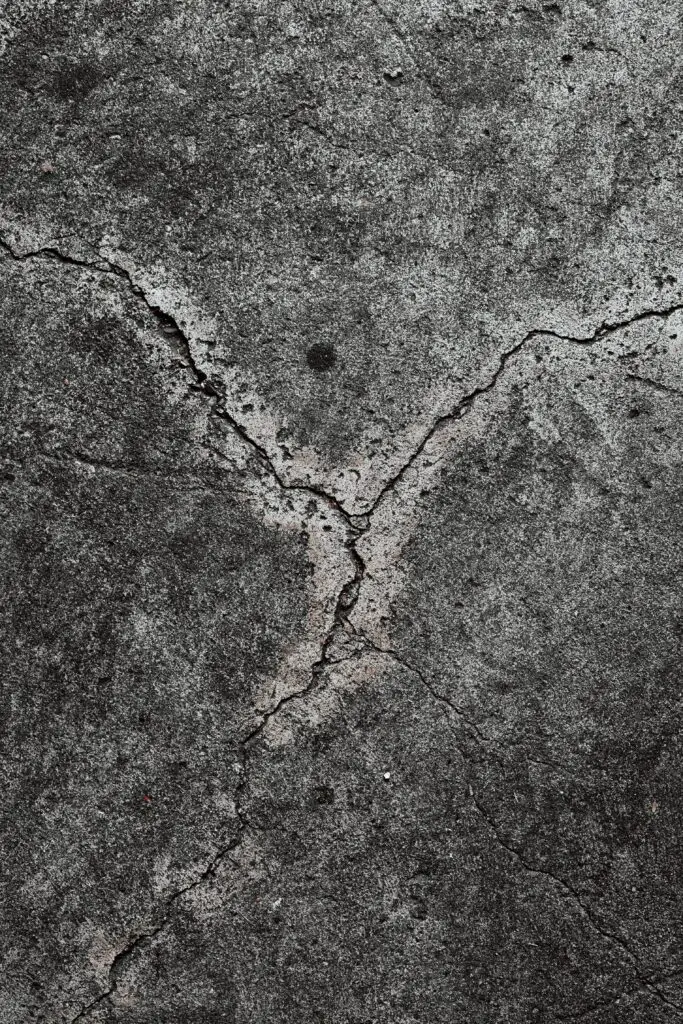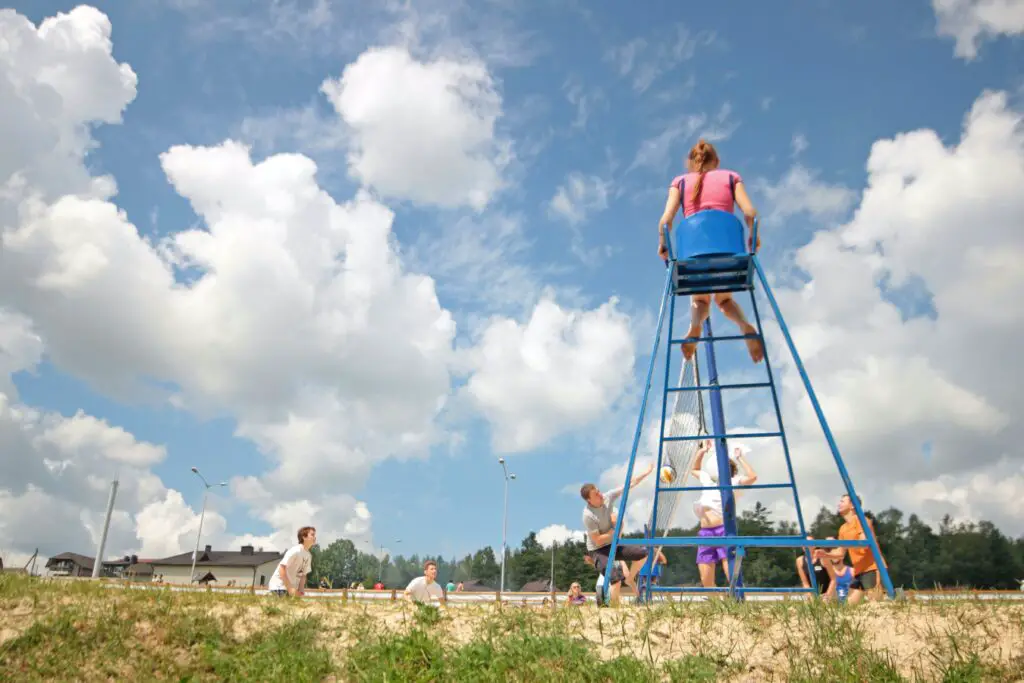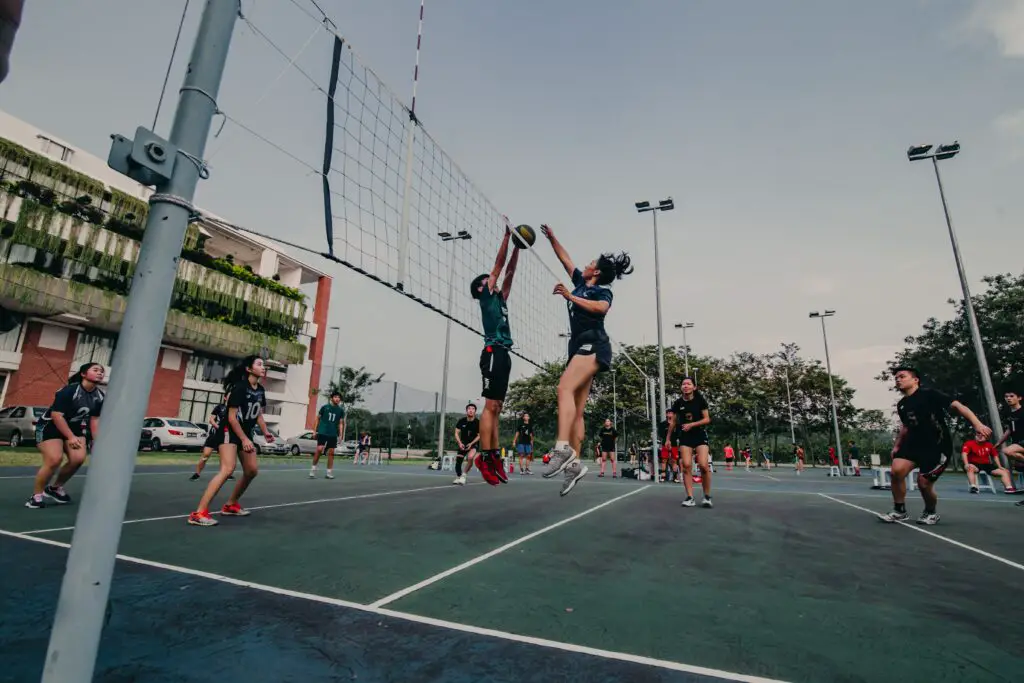It can be safe to play volleyball on hard surfaces but you have to adjust your playing style. Don’t make wild digs (or dives) and slide over the floor. Furthermore, you will also need to make sure that the floor is clean and doesn’t have debris that can fly around.
The underground also has to be flat and there shouldn’t be holes in it as people can trip over this. You will also need an outdoor ball because indoor balls are not made for rougher environments such as moisture and a rough surface.
Finally, you will also need outdoor shoes as these provide more grip than standard indoor shoes. Let’s discuss these points in further detail. So while it is possible to play on hard surfaces such as concrete, it is not as much fun and takes a lot of preparation to do so. You might look for other alternatives such as grass and sand. It mainly affects defensive movements as you can’t hit the ground when you try to get the ball. For short and casual games playing on a hard surface is fine but don’t play matches with competitive people.

Adjusting your playing style
Indoor volleyball players hit the ground quite hard. They wear knee pads that protect them and in general, this is enough to avoid a lot of issues. Once you start to play on concrete, however, the floor is a lot harder and you can land the wrong way. It can be difficult to let a ball fly if you know that you can catch it if you really went for it but you have to hold back when you play on the harder underground.
Knee pads can only absorb that much power and you are going to break them if you hit them too hard. If you really want to play volleyball competitively, you have to get an indoor field and avoid playing on hard surfaces. What can help is to reduce the size of the field. This makes sure that you don’t have to run as much and can focus more on ball handling instead of defending close to the ground.
Check the surface
If you play on concrete or other hard surfaces, there are often small stones or dirt lying around. These can get caught up by the wind and interrupt a game. Therefore it is best that you use a brush to get these away before the training or match starts. This makes sure that you don’t have to deal with small dust clouds or other items that can interrupt the vision or movements of the players.
It is also necessary to make sure that the floor is even and that there are no holes in the field. If there are holes, you might have to fill these up as they give an unfair advantage to one of the teams. Make sure that everyone can run in the whole field without having to worry about a part of the field.

For me playing on hard terrain is only necessary if you really can’t find another place to play. Playing on grass or sand is a lot more fun as you can use all the defensive techniques that are part of volleyball. Concrete limits you and therefore you can’t do the game justice on this underground. Often someone has a garden or you can find another location to play. This can make it a lot more fun to play than doing so on concrete. You can just use a rope to mimic a net if needed. Sometimes you can even rent a garden for a few hours to play volleyball. Renting a sporting arena can be quite cheap as well.
There is a reason that there are no professional volleyball competitions on concrete. It is just not that much fun to play on.
Get the right gear
Often hard terrain can be found outside. Therefore it is better to get outdoor gear. Outdoor balls are often made out of foams instead of rubber. This gives the ball a different look and feels but also makes it sturdier. Foam balls are better at dealing with moisture.
Since these are not stitched, they also have fewer breaking points. Not everyone likes foam balls but they have their advantages if you plan to play on hard ground. Foam balls can tear as well so you have to be careful and don’t throw them in glass or other sharp items.
You also might want to take a look at outdoor shoes, especially if it is raining outside. Indoor shoes were not designed for these circumstances and might break. Furthermore, they don’t offer a lot of traction when things get slippery. Be sure to check that the floor offers enough traction as some underground (for example polished concrete) can be very slippery and make it even impossible to play volleyball on.
You will have to find a way to create an outline for the field. This can be done by using chalk or adding fabric.

You can use mats or blankets on the floor to make it softer. The disadvantage of this is that these can slide and can make people trip so it is definitely not an ideal solution. I am not a big fan of playing on concrete. It is just not as much fun and can have bad outcomes if someone hits the ground hard.
Therefore I always try to find other undergrounds to play on. It might be fine for short casual games but if you are playing with people that are really going for every ball, it might end badly.
To conclude, we can state that it is possible to play volleyball on hard surfaces such as concrete but you have to prepare well, get the right gear and adjust your playing style. It is not possible to make big slides or get the ball really close to the ground as that can get too dangerous.
Playing on hard surfaces is therefore often less fun as you always have to check what is going on and can’t completely go after every ball that is coming your way. In terms of defense, it, therefore, limits the team. It shouldn’t affect your offensive game as you can still jump and pass as you would do during an indoor game.
Therefore, volleyball should only be played on hard surfaces such as concrete if you really don’t have other options available as it makes it a lot harder to defend. It can work for casual games but the problem is that people often get more competitive during a game so they might make hard landings because they got too caught up in the match.